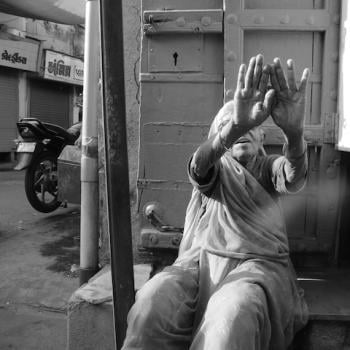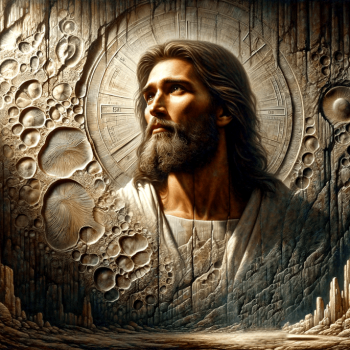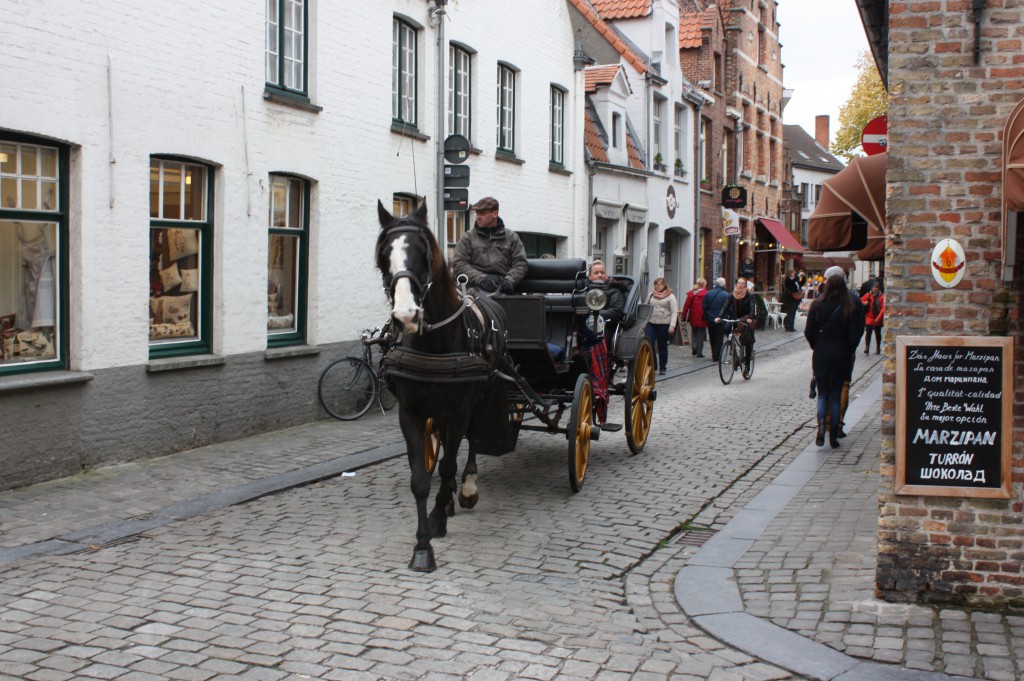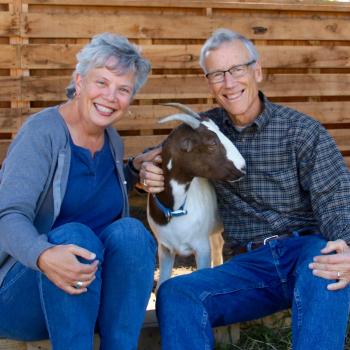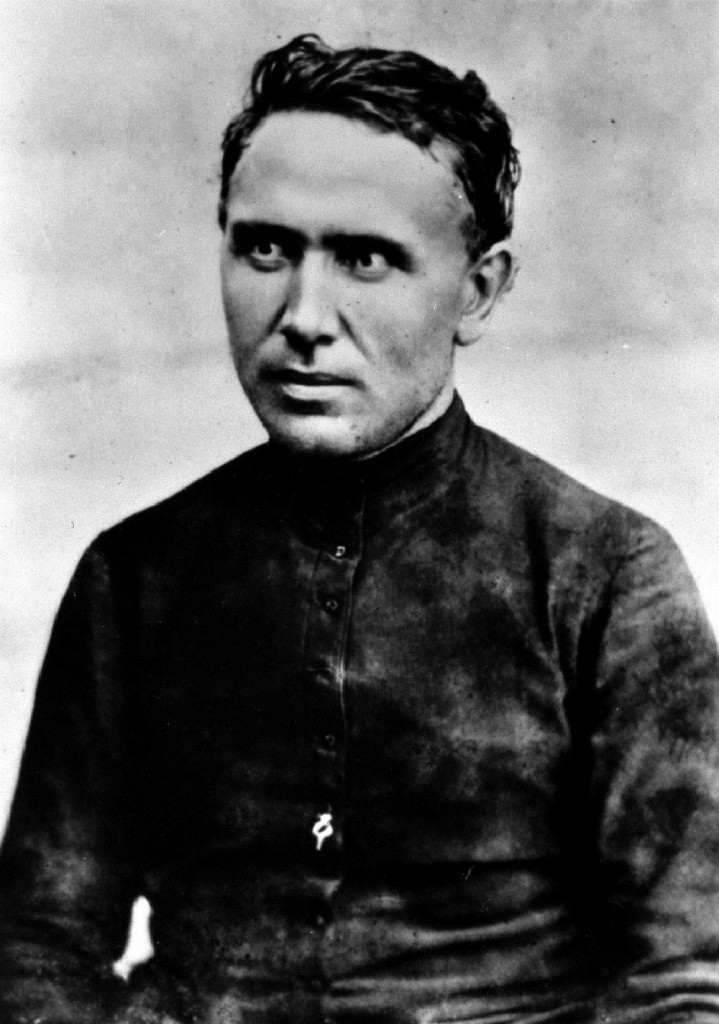
Before we leave Leuven, Belgium, there’s someone I want you to meet: Father Damien, who in 2005 was voted De Grootste Belg, the Greatest Belgian, in a poll conducted by the Flemish public broadcasting service.
Never heard of him? Neither had I, but after visiting his shrine I’m most grateful to have learned about his remarkable life.
Jozef De Veuster was born in 1840 in the Belgian village of Tremelo. As a young man he joined the Congregation of the Sacred Fathers, taking the name Father Damien and following in the footsteps of his older brother, Pamfiel. When Pamfiel caught typhus as he was preparing to become a missionary in Hawaii, Damien went in his place.
At first he was happy in his new home, but gradually he became restless, wondering if he was making a genuine difference in the lives of the islanders. When he learned that the Kalawao leper colony on Molokai Island was in need of a resident priest, he immediately volunteered.
Father Damien not only convinced his superiors that he should go to the colony: he told them that he wanted to stay there permanently. His reasoning was that if people knew that he was only temporary there, they wouldn’t fully trust him. Permission was granted, and Father Damien traveled to the leper colony.
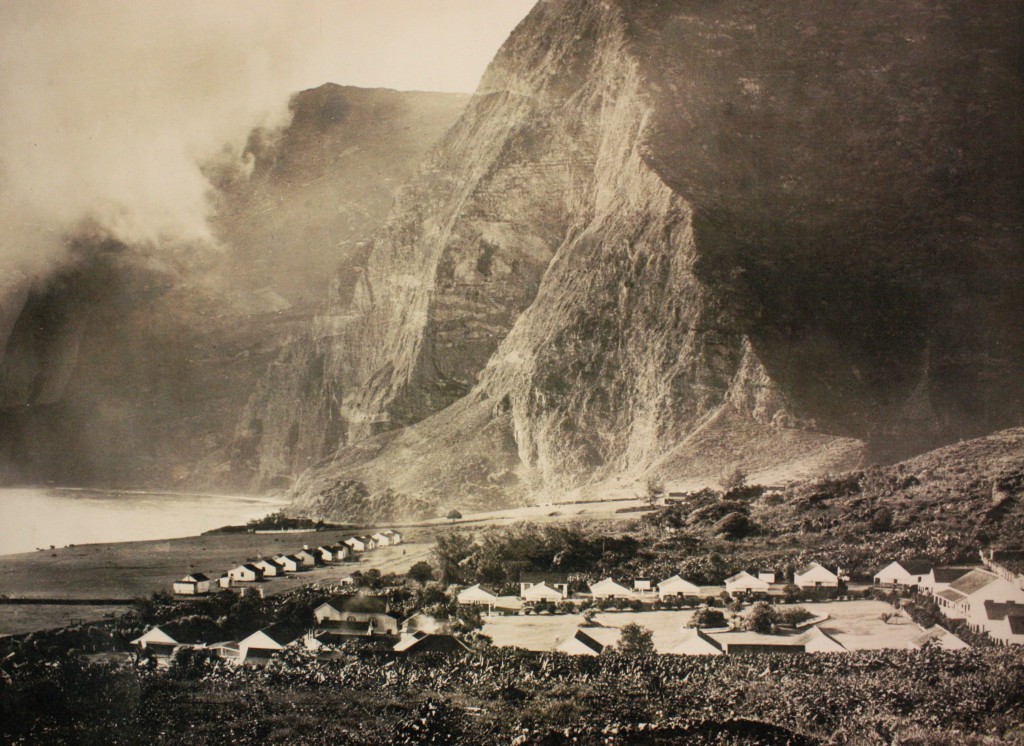
Keep in mind that this was during an era when leprosy was an incurable and terribly disfiguring disease. The government of the islands quarantined lepers in remote colonies, in fact, because of the fear that the contagion would spread. The colony on Molokai was particularly isolated, located on a strip of land separated from the mainland by a steep mountain ridge.
When Father Damien arrived, conditions in the colony were wretched. Crime was rampant; misery ubiquitous. During his 16-year tenure there, he worked tirelessly to improve the lives of its more than 600 residents. Living among them, he bandaged wounds, dug graves, led services, organized schools and choirs, constructed a water system, founded two orphanages, and badgered the Hawaiian government for better housing and medical care for the colony.
Doctors now know that leprosy is actually not very contagious and only a small percentage of the population is susceptible to it. But Father Damien was one of the unlucky ones. In 1884, after 12 years living in the colony, he began to experience the tell-tale sign of numbness in his feet. Gradually he came to share in the disfigurements and disabilities of his parishioners, finally succumbing to the disease in 1889 at the age of 49. In 1936 his remains were transferred to Leuven, which is near the village of his birth.
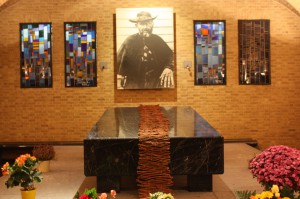
But Father Damien’s influence didn’t end with his death, for stories of the “leper priest” spread around the world. Mahatma Gandhi was one of many who took inspiration from his life, saying that Father Damien had a great influence on his own work among the outcasts in India. Father Damien’s statue stands outside the Hawaii State Capitol Building, and Barack Obama, who spent part of his growing up years in Hawaii, has expressed his deep admiration for him. In 2009, Pope Benedict XVI canonized Father Damien as a saint in a ceremony that was attended by native elders from the island of Molokai. He is popularly known as the patron of lepers and of all outcasts.
I visited Father Damien’s shrine in Leuven on a cold and rainy November day, in weather very different from that of his adopted homeland. Father Damien’s shrine is located in the lower level of Sint-Antoniuskerk, a modest brick church that also has displays about his life arrayed around the perimeter of its sanctuary.
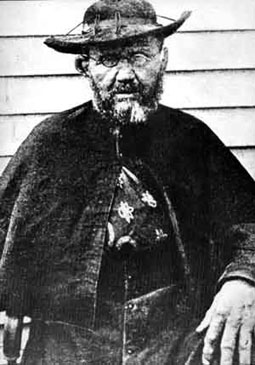
As we entered the crypt area, I knew we were in a holy place. With its fresh flowers and lighted candles, it felt like a shrine that was cherished and cared for.
As I stood in front of the shrine, I was struck by the changes that had occurred in Father Damien’s face through the years. As you can see from the photo at the beginning of this post, as a young priest he was a handsome fellow, with finely etched features and a piercing gaze. Contrast that with the photo at the right, which shows him shortly before he died.
I think that as a person ages, one can often see their character and life experiences written on their faces. Worry and stress mark our visages, as does joy. In one sense Father Damien died a disfigured and ugly man, with a bandaged arm and gnarled hands. But there’s something about that image that captures one’s attention, isn’t there? His picture intrigues us, I think, because it provides visible evidence for his reckless giving away of himself to others, despite knowing what the ultimate cost might be.
Father Damien is indeed De Grootste Belg.
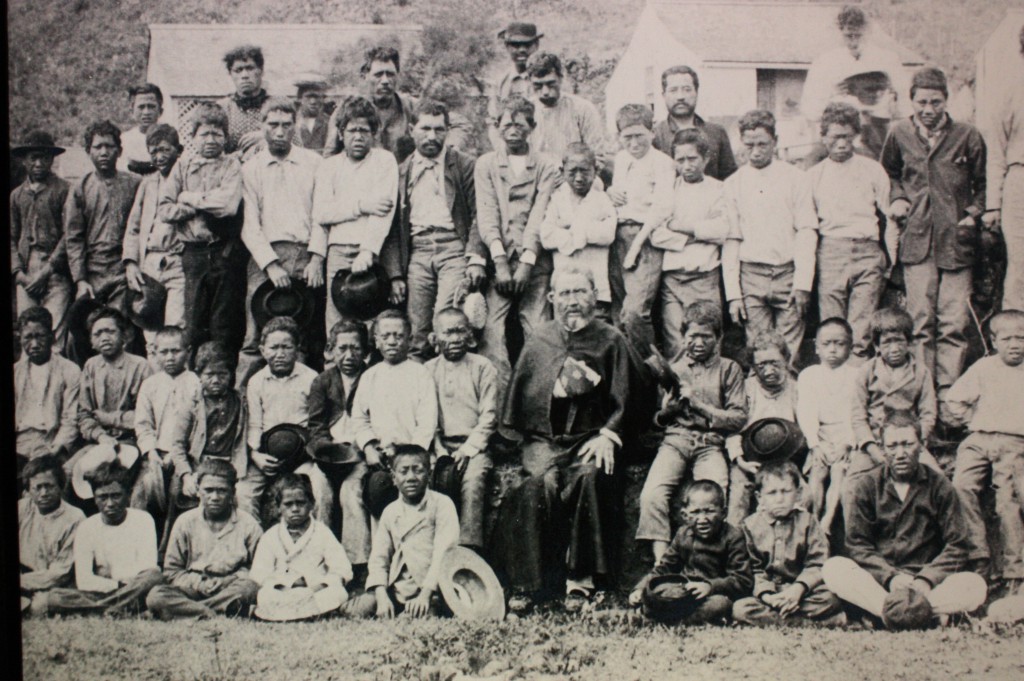
Beginning with this post, I will occasionally post videos of the holy sites I visit. Here’s the first one:



